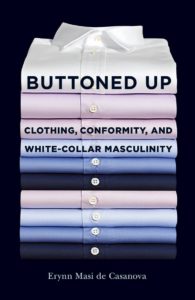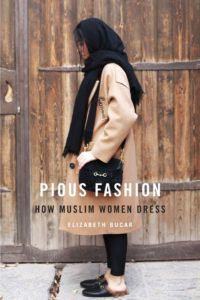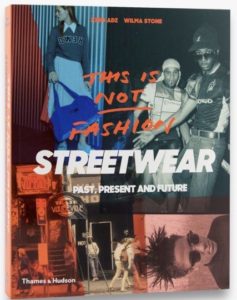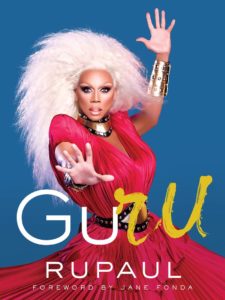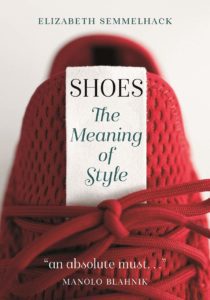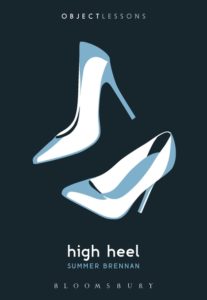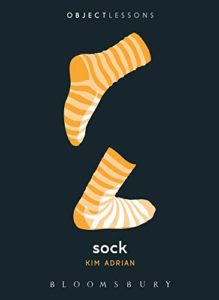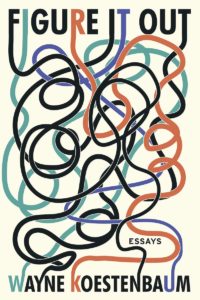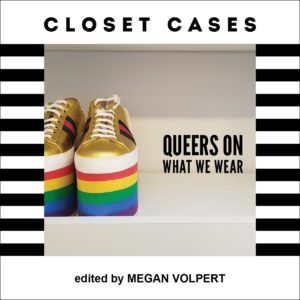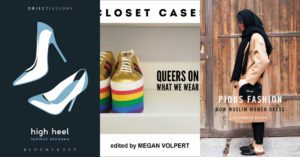
Nearly everybody wakes up in the morning and puts on some clothes. Clothing is universal, and that makes our clothes worthy of philosophical examination. I’m no expert, but as a queer woman I have come to possess a certain specialized knowledge about clothing due to its significance as a mode of gender expression. How we signal our identity—or how we slide it under the radar—often involves thinking about how to get dressed each morning. How to get dressed is an utterly practical and frequently creative consideration, and is too commonly dismissed as a low-brow pursuit of “fashion” or a somewhat more elevated “style” obsession.
As a reader of clothes-concerned magazines from Esquire to Vogue, I have often felt that the valuable sartorial considerations being posed in mainstream publications are not getting to the heart of those philosophical questions about wardrobe. So, I decided to help fill the gap: I edited a beautiful full-color anthology from Et Alia Press, Closet Cases: Queers on What We Wear, out now. Below are ten of the books that inspired me while I was working on this project.
***
Buttoned Up: Clothing, Conformity, and White-Collar Masculinity by Erynn Masi de Casanova
This is a workwear game changer that probably isn’t getting the audience it deserves because it’s marketed as a social sciences book. It’s a highly accessible, data-driven look at how we dress for the office. I teach in a public high school, and found many new ways of looking at how I dress for my classroom. The function of this book is to describe what men are wearing to work; there are exhaustive interviews with corporate employees from Cincinnati, San Francisco, and New York City. I found myself especially connected to “the loud socks guy,” and it was nice to see a logic for the stereotypical pleated khakis laid out properly. Especially for people who have a clear sense of what they will and won’t wear on a Monday, this book offers an articulation of why you do what you already do and—perhaps more crucially—what advantages and consequences it has for your involvement in a workplace community.
Pious Fashion: How Muslim Women Dress by Elizabeth Bucar
Bucar’s book totally opened my eyes; I’ve never traveled to Turkey, Iran, or Indonesia, and I probably never will. Bucar is a professor of philosophy and religion who went to these countries and asked women to talk with her about their clothes. One of my favorite parts of this study is its ongoing discussion of head and full-body coverings and evaluation of what constitutes “bad hijab.” I also learned so very much about fashion in these three distinct examples of Muslim culture. For instance, it turns out that a tiny flash of green embroidery is worth a thousand revolutionary words. And, I was haunted for weeks by a full-color photo of a young Muslim woman who self-identified as a punk—both for her similarities to me and for her differences. Bucar also led me to an Instagram account that I continue to drop in on with surprising frequency: @TheTehranTimes.
This Is Not Fashion: Streetwear Past, Present, and Future by King ADZ and Wilma Stone
This Is Not Fashion is perhaps the most genuinely informative coffee-table book I’ve ever read. Whether your personal tastes are punk or prep, athletic or military, this book offers a historical, globalized and ultimately encyclopedic array of facts and food for thought about the complex chaos of streetwear. The book itself is beautifully produced, and its creators deserve major applause for giving equal emphasis to both the iconic and the obscure when selecting photographs to represent each concept, brand, or moment in time. Streetwear always sends a message, and this book deftly navigates many contradictions necessarily embedded in this coolest and most creative field of capitalist enterprise.
Iris Apfel: Accidental Icon by Iris Apfel
It was my wife who turned me on to the merits of Iris Apfel through the documentary about her fashion (a lesser-known Albert Maysles film from 2014, titled Iris and available on most major streaming platforms). Mindy had been a longtime fan of the self-described “geriatric starlet” and was so excited about this book that we bought it immediately, only to savor it by reading two pages aloud to each other each night at bedtime. I know; we’re very cute. So is Iris—and she’s fierce, too. She’s an original gangster of eclectic New York fashion, and at ninety-eight years old has finally gifted the world a collection of her thoughts in print. This memoir focuses on Apfel’s work in the textile industry, but also offers her unique style theories—plus thoughts on marriage, manners, risk-taking, and more subjects that sparkle when seen through the eyes of this true fashionista. The book is a bottomless pit of bon mots and very fun to flip through, filled as it is with photos of her incredible wardrobe.
GuRu by RuPaul
This is another book that gives off coffee-table vibes because of its stunning photography, but similar to Iris Apfel: Accidental Icon, you really want GuRu because it has a lowkey self-help quality underneath its stories about the glamorous life of its subject. For those still struggling down the rocky road to self-acceptance, look no further—this is a book that is sort of about drag queens, but it is not particularly for drag queens to read because the actual drag info is too basic. Drag queens symbolize a lot of things, and RuPaul is nothing if not adept at steering the metaphor of drag toward empowerment targets both small and large. His catchphrase bears repeating: If you can’t love yourself, how are you ever going to love somebody else? I want sheltered suburban moms to read this book, and I’d also like to see it in the hands of every middle school kid regardless of their gender or sexuality. It’s a quick, easy read with totally appropriate content that might really help a pimply thirteen-year-old work on their glow-up from the inside out—as well as shake up their parents, who’ve leaned into that minivan life a little too hard.
Our Shoes, Our Selves: 40 Women, 40 Stories, 40 Pairs of Shoes by Bridget Moynahan and Amanda Benchley
When I saw this anthology’s roster of women, as an editor, I became intensely jealous. Everybody in this book is famous and accomplished: Ava DuVernay, Susan Collins, Misty Copeland, Padma Lakshmi, and so on. A standout for me was a photograph of Tammy Duckworth’s worn-out combat boots alongside an essay that opens by reminding us she no longer has feet. But eventually the feeling crept up on me that the majority of women in the book were white, and wearing heels. Lots of stories about broken heels, but really none about breaking away from the social expectation that women should wear heels. Ultimately, this rather uncritical approach rubbed me the wrong way, but it did clarify my vision for my own project: ignore prestige contributions; publish queers who reflect a wide spectrum of diverse intersections and who are excited about asking big questions that undercut “normal” social order.
Shoes: The Meaning of Style by Elizabeth Semmelhack
If you’re ever in Toronto, hit up the Bata Shoe Museum. Semmelhack is senior curator at the museum and she really does know everything you might want to know about shoes, from their history and evolution to their functionality and philosophy to their creativity and diversity. The book has four sections—sandals, sneakers, boots, and heels—so whatever kind of shoes you’re into, this book has a significant chunk of information to offer. Semmelhack’s analysis really hits because it generally confirms your own hazy thoughts about the meanings of your own footwear, but also offers a plethora of additional examples that run the gamut from obscure antiques to postmodern high art.
High Heel by Summer Brennan
I’ve always been a superfan of Bloomsbury’s Object Lessons series (and, full disclosure, I’ve recently agreed to write the Perfume book). Each of these pocket-sized offerings is a deep dive into the many facets of one particular object: egg, tree, speed bump, hotel, umbrella, hoodie, whatever. I don’t wear high heels but was still compelled to pick up Brennan’s book because her approach to the text struck me as more literary and less academic than other books I’d read on the topic. This is a long hybrid essay, moving by turns from memoir mode to something kind of resembling epic poetry. Brennan worked at the United Nations for many years, and her theory of heels is not all sunshine and roses. She asks hard feminist questions through her examination of the indoctrination and policing of female culture and considers whether heels are ever truly our own choice. This book is a sickeningly good mix of shoe love and system hatred.
Sock by Kim Adrian
After all that reading about shoes, you know I had to jump at the Object Lessons book on socks. Through three sections on evolution, desire, and industry, I gradually came to see that Adrian’s interest is socks was actually about her profound love of knitting. This happens so often with our clothes—we think we love an article of clothing for one reason when we see it in the store or online, but it unveils new things to us about ourselves once we put it on at home, and then becomes imbued with changing significance once we have a history with it. Adrian examines how socks are about biologically having to walk on two legs, but also psychologically about Barthes, Bataille, Freud, etc. She’s also got a good rant against fast fashion, as you’d expect from someone keen on knitting.
Figure It Out by Wayne Koestenbaum
A lot of the most profoundly affecting submissions I received involved the motif of revelation, and so I began to realize I’d need to let go of what I’d thought the anthology might have to say and instead embrace a radical and alert form of openness to a cornucopia of sartorial reveals. Whenever I need to hit the reset button on my expectations, Koestenbaum is my touchstone. I’m listing Figure It Out here because it’s his newest work—and perhaps the one that best displays his ability to maintain the kind of radical and alert openness I’m talking about—but nearly all his books have something to do with fashion. Figure It Out opens with a few pages of his admiration for the leather bracelet of a stranger on the train and then moves into a consideration of eyeglass frames. I could also highly recommend Jackie Under My Skin: Interpretations of an Icon, which is certainly the best theorizing about Jackie O ever done—and the pleasure Koestenbaum finds in examining her attire is masterfully conveyed. The quality of Koestenbaum’s attention and his ability to delight and surprise is unmatched by any writers I have read. His senses of play and inquiry are often my guiding lights, and Figure It Out offers great benchmarks and springboards for anybody feeling a little rigid about or stuck in a certain way of thinking.
And to close out this wonderful list, we just had to include Megan’s new anthology, Closet Cases: Queers on What We Wear, just released from Et Alia Press! – Ed.
Closet Cases: Queers on What We Wear edited by Megan Volpert
Jean jackets can be armor. Bracelets, spiritual totems. Belts can save lives, or take them. As a verb, “fashion” is exceedingly queer. Our queer community learns to fashion identity from and through the clothes we wear, the costumes we choose, the fabrics we desire—and the statements these make. No other community allows clothing to serve as such a primary, dominant marker of subjectivity, both individually and collectively. We don’t simply permit fashioning; we rely upon what we put on our bodies to tip off, to signal, and to serve as evidence of who we are. This is much more than a “fashion book.” It is a collection of artifacts that testifies to the power of fashion as a verb as it unfolds the complex and lovely strategies governing what we do in the LGBTQ+ community to build authentic selves that are both comfortable and seen.

